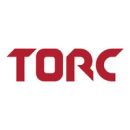What is the difference between honesty and transparency? These words bear similar meanings but also offer a few key differences.
Honesty is reactive — a question is asked, and the decision is made to respond truthfully, while transparency is proactive — the question doesn’t need to be asked because the answer was already there in the first place. Similarly, a commitment to honesty is conditional and contingent upon the circumstances, while transparency is absolute, as evidenced by easily accessible or understood information.
In the workplace, transparency revolves around the flow, accuracy and expediency of internal communication across all organizational levels. As employees, our ability to see the bigger picture and trust what we’re told is integral to feeling engaged, valued and aligned with our colleagues, but that often isn’t the case.
In a 2021 Gallup survey, only 7 percent of respondents strongly agreed that internal communications at their company were accurate, timely and open. Transparency is more critical now than ever with the move toward remote and hybrid work. When in-person interactions with colleagues are waning, leaders must be more purposeful in fostering a transparent culture.
This isn’t something that can be achieved overnight, and at Torc Robotics and Workrise, a transparent culture relies on sustained companywide visibility and tangible strategies. Leaders from the Austin companies went into detail about how they encourage transparency and openness.

Torc Robotics, an independent subsidiary of Daimler Truck AG, brings safety-critical self-driving applications to trucking.
How do you encourage a culture of transparency right now — particularly when, during a time of industry ups and downs, there are likely difficult-to-answer questions on employees’ minds?
A culture that values and demonstrates transparency is critically important to us at Torc. We’ve grown tremendously over the past year in both employee count and office locations. Because of this, we’ve been intentional about how we stay connected to our employees.
Our Torc’rs regularly hear from an executive via video, Zoom or in-person office visits at least once a month. Everyone, including our CEO, is always available to address any concerns. When issues arise, our communications strategy is to be proactive and get in front of our teams earlier rather than later.
Lastly, Torc’s focus on safety is woven into our culture, creating an environment of openness where our employees feel safe in their workplace surroundings and around other team members.
Everyone, including our CEO, is available to address any concerns. When issues arise, our communications strategy is to be proactive and get in front of our teams earlier rather than later.”
How do you make yourself available to employees so that they can ask relevant questions?
Every department can host regular info sessions to cover topics such as current projects, important milestones and team structure and philosophy. Our product management team hosts a series of sessions available to everyone that discuss our timelines and go-to-market strategy. Another great session, Talk Torc to Me, is hosted by our talent acquisition team quarterly. It’s an interactive chat to talk about all things talent and recruiting. All our info sessions are intended to be a two-way dialogue.
Broadly, we host quarterly town halls and informal “coffee chat” sessions with our engineering leadership. Our coffee chats aim to encourage our Torc’rs to voice issues or ideas around a particular topic. This helps to break down any silos, gives leadership real-time feedback and further enhances the collaborative nature of our culture.
Weekly one-on-one meetings and skip levels also play an important role in employee engagement and transparency. Finally, visibility from our executive leadership team is a priority for us this year. Our executive leadership team makes an effort to travel monthly to one of our four locations for in-person meetings to encourage face-to-face interaction and connection.
What tips would you share with fellow leaders who are endeavoring to create a culture of transparency right now?
Simply be honest. Let your employees know if you can’t share information for a given reason. Operating blindly or dodging topics only results in more questions and assumptions, which can make things worse. I firmly believe that a more knowledgeable and informed employee base allows team members to do their jobs more efficiently and establish solid relationships. These actions build trust and fuel transparency and innovation, which is vital for us as we continue to advance the autonomous industry.
Workrise is a workforce management solution that connects skilled laborers to job opportunities in the solar, oil and gas industries.
How do you encourage a culture of transparency right now — particularly when, during a time of industry ups and downs, there are likely difficult-to-answer questions on employees’ minds?
Transparency is only effective if the messages you are delivering are received through the lens of trust. We have focused on building a culture of trust that utilizes transparency, 360-degree feedback and openness about successes and failures. This approach to talking about commitments, proactively offering real-time feedback to enable others’ success, and being transparent about outcomes has initiated a positive cultural flywheel. This creates the basis for being transparent on difficult-to-answer questions that require us to rely on the trust that we have built up over time.
Fear is at the root of why companies choose not to operate with transparency. Fear of top talent exiting, erosion of productivity and negative reviews can all create artificial barriers to leaders being open and honest with their teams. I have found that if you are consistent from the start about operating with transparency and focusing on smaller things that affect everyday employee life, you are able to manage fear. This is because you have a strong handle on potential pitfalls due to the depth of relationships you develop with your teams, which is driven by the trust you have established.
How do you make yourself available to employees so that they can ask relevant questions?
I am a huge believer in making myself available. I have operated in cultures where gatekeepers are heavily leveraged to create separation between leaders and employees. I have found this creates a gap in being able to build authentic relationships with teams. We host monthly all-hands and fireside chats on various parts of our business and have created public dashboards so everyone can see key business metrics.
The most powerful thing I do is one-on-one meetings. I openly encourage everyone in my organization — not just directs — to come to me with questions, concerns and feedback. When I began, this was not taken advantage of frequently, but as we have improved our culture, I have seen this become a very normal item on my calendar. The organization’s willingness to openly bring concerns to me is the strongest signal I have that we are building a trust-based culture, and it is these conversations where I have some of my most impactful insights and learnings.
The most powerful thing I do is one-on-one meetings. I openly encourage everyone in my organization — not just directs — to come to me with questions, concerns and feedback.”
What tips would you share with fellow leaders who are endeavoring to create a culture of transparency right now?
While trust is foundational to operating with transparency, it’s not everything. You must also have a clear mission that articulates company direction and gives visibility to every employee about why their work matters. We invested heavily in refining our mission in 2022 to ensure that we are clear with every team about the direction we are headed. We continue to work on being transparent about how every person’s role can contribute. We still have work to do.
Companies that are able to articulate the why behind decisions and can tie it back to their mission create a powerful paradigm that employees can leverage to contextualize messages. This is especially critical when messages are challenging — such as driving a focus on costs, company pivots or a challenging macro environment. Providing context ensures employees understand the impact and what it means for them.
Ultimately, employees want honesty and data to make informed decisions for themselves and the company. By trusting people with complete information, we empower the entire organization to run at our biggest opportunities.











